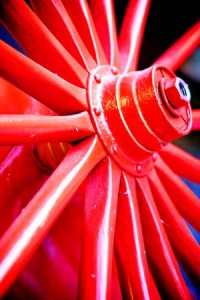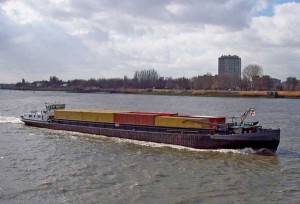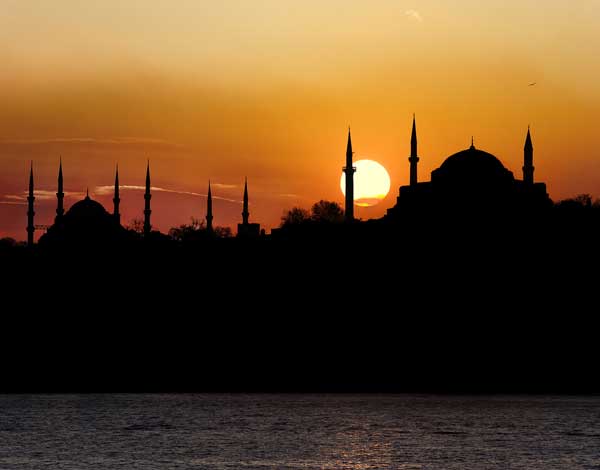
By Tetsuo Kotani, Special Research Fellow, the Okazaki Institute, Tokyo
Strategic Insights, No. 31, March 2011
09/08/2011 – Surrounded by the sea on all sides, Japan enjoys the benefits of the waters around it in the form of fishery and maritime trade with countries around the world. However, these waters are also troubled with various problems, including maritime accidents such as collisions and running aground of ships, illegal entry of foreigners on smuggling vessels, maritime crimes such as the smuggling of illegal drugs and other contraband, and international disputes over the sovereignty of territorial possessions and maritime resources.
Security and safety
Japanese exclusive economic zone (EEZ) is about 4,470,000 km2 (world’s 6th largest), while the territory is about 380,000 km2 (world’s 61st largest). Its coastline is about 35,000 km (world’s 6th longest). Japan has 6,847 remote islands in addition to the five main islands (Honshu, Hokkaido, Kyushu, Shikoku, and Okinawa). If Wakkanai, the northernmost city in Hokkaido, were Copenhagen, Denmark, then the remotest islands of Ishigaki, Okinotori, and Minamitori would be Casablanca, Morocco, Tripoli, Libya, and Alexandria, Egypt, respectively.
In other words, Japanese waters stretch as far as NATO Europe plus the Mediterranean.
Since its establishment in May 1948, the Japan Coast Guard (JCG) has been charged with the duty of ensuring security and safety at sea. In order to ensure that the people of Japan can utilize and enjoy the various blessings of the sea some 12,500 Coast Guard officers around the country are engaged day and night in a variety of activities, including maritime safety operations, search and rescue operations, criminal investigations, marine environment preservation, disaster mitigation, and marine research, while at the same time they strengthen cooperation with other countries.
Securing sea borders
The distance between the baselines of Japan and its neighbors is less than 400 nautical miles, but the delimitation with its neighboring Russia, China, and South Korea has not been fixed. The Northern Territories and Takeshima Island are under effective control of Russia and South Korea, respectively, and China claims jurisdiction over the Senkaku Islands, which are under Japanese control. japan’s hidden navy Figure 1 Credit: Risk Intelligence
The Russian authority frequently captures Japanese fishing boats around the Northern Territories, and in 2006 a Japanese fisherman was killed for the first time since 1956.
South Korea stations security forces on Takeshima Island and has captured 326 Japanese fishing boats near the island. Chinese activists and fishing boats violate the territorial seas around the Senkaku Islands, and a Chinese trawler violating Japanese territorial waters rammed into a JCG cutter in September 2010.
Growing tension over maritime interests poses serious challenges to good order at sea. China actively conducts scientific surveys in Japanese EEZs. Such activities reached a peak in 1999, and 33 Chinese survey ships were detected. Japan and China reached an agreement on prior notification regarding scientific surveys in the East China Sea in 2001, but China still conducts unreported surveys without recognizing Japan’s EEZs in the East China Sea and the Philippine Sea. The JCG deploys patrol boats and aircraft to regulate scientific surveys by foreign ships in Japanese EEZs.
North Korean spy boat incidents first led to the reassessment of JCG’s role in securing sea borders. The JCG detected a North Korean spy boat in the Sea of Japan off Noto Peninsula in March 1999, but failed to arrest it. Based on the lessons from this incident, the JCG prepared a response manual and the JCG law was amended to allow the use of force for the purpose of stopping suspicious boats. In December 2001, the JCG detected another North Korean spy boat in the East China Sea off southwest Kyushu and exchanged shots. The spy boat detonated itself in the end, and Japan salvaged the boat and confirmed that it was a North Korean ship engaged in drug smuggling. The whole story was broadcasted on TV and Japanese taxpayers appreciated JCG’s role in securing sea borders. After this incident, the JCG introduced 12 high-speed, high-capability patrol boats, including three 2,000-ton helicopter patrol boats, to deal with spy boats.
The JCG combats illegal fishing by foreign ships in Japanese EEZs. Illegal fishing by South Koreans in Japanese EEZs is the most serious. Illegal foreign fishermen operate high-speed boats, GPS, and other sophisticated devises and they are becoming violent. Japan regulates those illegal fishing with patrol boats and aircraft in cooperation with the Fishery Agency, while introducing more sophisticated radar and other equipment. patrol vessel
Counter-terrorism and counter-proliferation are new additions to the JCG’s mission.
The JCG has intensified port state control according to the 2004 amendments to the International Convention for the Safety of Life at Sea (SOLAS), The JCG is also strengthening security of important seaside facilities such as nuclear power plants, oil stockpile stations, ports, and U.S. bases. Counter-terrorism measures at port also have positive effects on smuggling detection. The JCG is Japan’s leading agency for the Proliferation Security Initiative (PSI) and North Korean ship inspection under the UN Security Council Resolution 1874.
In addition to its own efforts to secure sea borders, the JCG has been promoting bilateral and multilateral partnerships to maintain good order at sea. The JCG has bilateral agreements with its counterparts in South Korea, China, and Russia on coordinated enforcement of illegal fishing and smuggling, rescue, and regular or irregular mutual visits of ships and personnel.
The JCG also initiated a multilateral forum. In December 2000, the JCG took the lead in organizing a conference among the head of coasts guards and equivalent entities of Japan, Russia, the United States, and South Korea. China and Canada joined this group later, and it has become an annual North Pacific Coast Guard Forum (NPCGF), comprising of a commandant-level and working-level meetings.
The NDPGF has become a useful confidence-building mechanism, producing practical outcomes such as joint operational guidelines, combined training for counter-smuggling and fishery enforcement patrol. This forum, however, avoids discussion on sensitive territorial issues.
Navigational safety and the environment
Securing navigational safety and marine environmental protection are important missions for the JCG. There are about 2,600 maritime accidents annually in Japanese waters. Japan was the first country that introduced MARTIS (Marine Traffic Information Service) and recently introduced MICS (Maritime Information and Communication Service) so that those who enjoy marine leisure can get maritime safety information. In 2005, Japan formulated the New Traffic Vision, which called for the development of ENSS (Electronic Navigation Support System), an IT-based comprehensive navigational safety system based on AIS (Automatic Identification System).
The accidents of the Russian tanker, NAKHODKA, in the Sea of Japan in January 1997 spilled about 9,000 tons of heavy oil led to strengthening of Japan’s oil spill countermeasures. Those measures include enhanced interagency communication, revising prevention law and plans, introduction of new recovery and cleanup equipment.
More recently, according to the Protocol on Preparedness, Response and Co-operation to Pollution Incidents by Hazardous and Noxious Substances, 2000 (OPRC-HNS), the JCG is introducing HNS prevention equipment and training response team.
Securing sea-lanes
Another turning point for the JCG was the ALONDORA RAINBOW incident of October 1999. Pirates in the Strait of Malacca hijacked the Japanese cargo ship, and the Indian Navy and Coast Guard found and rescued the ship.
After this incident, the JCG took the initiative to establish a multilateral framework to deal with piracy in the region. Japan hosted a series of international antipiracy efforts inviting regional law enforcement agencies, maritime policy agencies, the International Maritime Organization (IMO), and ship owners.
A product of this multilateral approach was the ReCAAP (Regional Cooperation Agreement on Combating Piracy and Armed Robbery against Ships), the first intergovernmental antipiracy agreement adopted by 16 regional countries, including Japan, the ROK, China, India, and ASEAN member countries.
ReCAAP went into force and an Information Sharing Centre was established in Singapore in 2006.
At the same time, the JCG contributed to capacity building of coastal states in Southeast Asia. The JCG, in cooperation with the Japan International Cooperation Agency (JICA), provided assistance for the establishment of regional law enforcement entities, such as the Malaysia Maritime Enforcement Agency (MMEA) and the Indonesian BAKORKAMLA, a law enforcement coordination body.
The JCG also initiated the annual Heads of Asian Coast Guard Agencies Meeting and took the lead in organizing the annual meeting in 2004, inviting 18 Asian countries, including ASEAN member countries to enhance response capabilities for antipiracy and counter-terrorism.
With regard to the piracy off Somalia, the Japanese government concluded that the situation was beyond JCG’s capacity and has dispatched Maritime Self-Defense Force destroyers and patrol aircraft to the Gulf of Aden since March 2009. The JCG cutters are too vulnerable to Somali pirates’ firearms and not designed for distant waters operations. Instead, JCG officers are aboard the destroyers for law enforcement.
A “hidden navy”?
Professor Richard Samuels at the Massachusetts Institute of Technology regards the JCG as Japan’s “new fighting power”. Although Japan has self-imposed constraints on security policy and spending, Japanese strategists have found the JCG is a useful tool to overcome those constraints, he argues.
They have used the JCG budget to surpass the self-imposed limit on defense spending — one percent of GDP – and changed the rules of naval engagement. JCG modernization and expansion not only enhances Japan’s power projection capabilities, but it also enhances its influence projection without inviting criticism from neighboring countries and domestic public. He concludes that while the JCG will not become a “second navy”, it is already de facto a fourth branch of the Japanese military.
However, this argument may be an overestimation of JCG’s current capabilities. The September 2010 collisions between a Chinese trawler and Japan Coast Guard patrol vessels in Japanese waters off the Senkaku Islands is a reminder of the importance of protecting this nation’s waters. Major Japanese political parties agree that the ability of the JCG to guard Japanese waters needs to be steadily reinforced, and the government has been updating JCG vessel and aircraft since 2006.
Vessels too old
Some of JCG patrol boats are showing their age and have reached the end of their useful life. Their hulls have corroded and they are too slow to perform their duties properly, among other shortcomings. The JCG’s activities will be seriously affected if the vessels remain in less-than-shipshape condition. The JCG plans to replace 10 large patrol vessels that are particularly timeworn among the 87 vessels that have reached the end of their useful life.
However, replacing these ships will take at least six years. The JCG has a plan to construct 22 new patrol boats, including a 6,500-tonne helicopter-vessel and 6 1,000-ton cutters.
There also are problems in the communications systems between ships, airplanes and helicopters. The JCG has not installed digital radio equipment that sends extremely secure transmission on all its vessels and aircraft. Some are still equipped only with analog radios, whose communications can reportedly be monitored by radios available on the market. As things stand, JCG vessels and aircraft cannot share any important information with vessels of the Maritime Self-Defense Force. The JCG has a 2 billion-yen upgrade plan for these communication systems.
Legal framework needed
However, shortcomings in domestic laws that surfaced following two incidents involving North Korean spy ships about a decade ago remain uncorrected. Japan had to deal with the spy ships by invoking the Fisheries Law and other laws, as there was no legislation designed specifically to deal with violations of territorial waters.
Although the Japanese government decided to allow the JCG to take more flexible response to violations in January 2011, the Territorial Sea Law needs to be revised to make violating Japan’s territorial waters an offense.
Since the collisions off the Senkakus, Beijing has frequently sent fishery patrol vessels to waters near the islands, including helicopter-equipped, state-of-the-art fishery patrol boats armed with machine guns.
China is trying to boost its control over disputed waters in the South China Sea by dispatching armed fishery patrol boats under the pretext of protecting its fishing vessels. Beijing is possibly taking similar action in the East China Sea, too. The Japanese government is considering a legal framework that enables the JCG to inspect foreign vessels, but an advisory board on JCG concluded that inspection of foreign government ships is not realistic.
Conclusion
The JCG has the hard daily task of policing port approaches and harbors, as well as patrolling Japan’s contested territorial water and EEZ claims. It conducts confidence-building measures with counterparts in the neighboring countries, while contributing capacity building in Southeast Asia.
But it does not project power. The JCG is, as Article 25 of the JCG Act clearly states, not the military but police. JCG patrol boats operate independently, not under a fleet commander.
However, the collisions between the Chinese trawler and JCG cutters was a wakeup call for Japanese decision makers about the need to upgrade the JCG to secure Japanese maritime borders and interests in the coming years.
Japanese are now intolerant of Chinese arrogance, and the Japanese government will be forced to take a resolute attitude if a similar incident occurs. On the other hand, given the strict fiscal constraints, it is unlikely that the JCG will be upgraded sufficiently. In fact, the JCG budget increase is almost flat for Fiscal Year 2011. Therefore, the Japanese government will need to upgrade ‘software’ such as its legal framework, rather than hardware.









